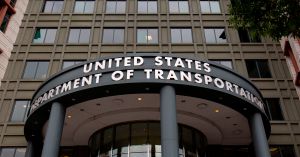Department of Homeland Security lays out AI plans in new roadmap

The Department of Homeland Security on Monday released its first-ever artificial intelligence roadmap, which is meant to spell out the agency’s current use of the technologies and its plans for the future.
Key points include a forthcoming DHS-wide policy directive on artificial intelligence, new guidance from the Cybersecurity and Infrastructure Security Agency focused on AI security, and an expected report from the Countering Weapons of Mass Destruction Office focused on the technology’s risks. The roadmap also highlights several ways the agency plans to use or is already using artificial intelligence, including for tracking suspicious vehicle patterns at the border and assessing damage to buildings after disasters.
“The unprecedented speed and potential of AI’s development and adoption presents both enormous opportunities to advance our mission and risks we must mitigate,” DHS Secretary Alejandro N. Mayorkas said in a press release.
Several DHS applications focus on generative AI or language models, including building an AI sandbox to experiment with large language models. The document says U.S. Citizenship and Immigration Services is considering using LLMs to train officers working with refugee and asylum applicants, while Homeland Security Investigations, the agency’s investigative arm, is looking at using the technology to look for patterns in documents being analyzed as part of investigations. The Federal Emergency Management Agency, meanwhile, is planning to use generative AI to help with creating mitigation plans required for certain community resilience grants.
The document also highlights other goals, including a new working group based in the Science and Technology Directorate that will eventually produce an action plan meant to address topics like algorithm training, pilots, and AI-enabled adversaries. The directorate will also create a testbed that will provide independent assessment services.
The roadmap comes as the agency ramps up its work on artificial intelligence. Last month, DHS announced it would hire 50 new AI experts for its AI Corps. Last year, the agency established an AI task force and released guidance meant to direct how employees use tools like ChatGPT and Dall-E.
DHS, per previous FedScoop reporting, has repeatedly updated its AI inventory, a public list of use cases required by a Trump-era executive order. That inventory has also been criticized by the Government Accountability Office for including a non-AI use case.






